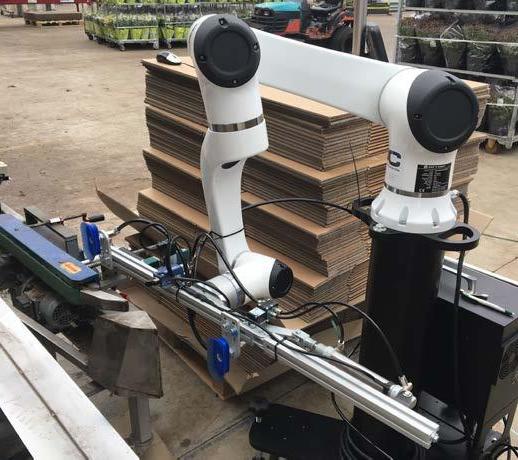
11 minute read
Labour and logistics
Smart ideas for labour challenges AHDB project code: SmartHort Term: 2018–2019 Project leader: Neil Feddon, Feddon USP
For horticulture, labour can account for up to 70% of total variable production costs. The continuous rise in the national living wage is resulting in labour costs increasing substantially, at a time when margins are being squeezed by retailers. The geopolitical environment, such as Brexit and the strengthening of economies in countries from which many seasonal workers migrate, may also significantly impact the future availability of workers.
Advertisement
Harvest automation spacing robots
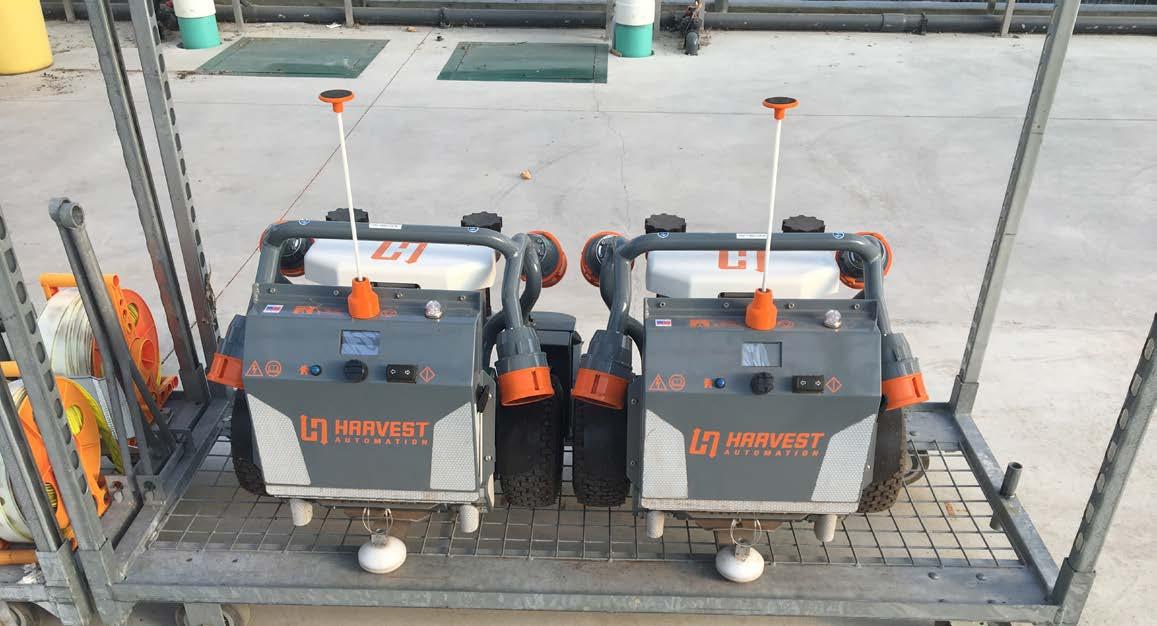
The project Increasing productivity and addressing the challenge of limited labour is at the heart of the SmartHort programme. Its core principles are increasing labour efficiency, improving management practices, supporting skills development and identifying new technologies that can be introduced into the workplace, such as autonomous guided vehicles (CP 187) and robotics. This will help the horticultural industry strive towards greater efficiency and get the best out of its resources and workforce.
Results During 2019, AHDB established three strategic SmartHort Centres. These centres have a focus on increasing labour efficiency by introducing Lean business management principles – a practice that champions continuous improvement by systematically implementing small, incremental changes in processes in order to improve efficiency, quality and reduce waste.
In partnership with Fedden USP, the SmartHort Centres are aspiring for productivity improvements in the region of 25–40%. The three host businesses were selected following an open call and include: Haygrove Ltd, Herefordshire; Volmary Ltd, Cambridgeshire, and Thomas Thomson Ltd, Perthshire.
In total, there have been three events at each business over the year and all delegates have been guided through the process of Lean implementation and how to develop an action plan specific to their own business.
The SmartHort automation challenge AHDB project code: CP 187 The application of advanced automation and robotic systems in horticulture Term: February 2019 to January 2021 Project leader: Robert Harrison, Warwick Manufacturing Group
Plant movement on many nurseries can be a very labour intensive operation, both during production and dispatch. A number of autonomous guided vehicles (AGVs) are commercially available, but several are general function vehicles requiring modification before they can undertake nursery-specific tasks.
The project Warwick Manufacturing Group and AHDB are working in collaboration with Crystal Heart Salad Company, Valefresco, and W.D. Smith and Sons on the ‘Automation Challenge Project’ to provide a form of AGV suitable for the many fetch-and-deliver or logistics-type tasks commonly required by growers. The aim is to transform on-site labour-intensive manual logistics into autonomous logistics. This will enable human resources to focus on value-added aspects of the businesses rather than spending time on non-value-added tasks.
Results In the first phase of the project, three selected businesses were visited to conduct an on-site technical feasibility study for deploying AGVs in glasshouses to transport plants around each site. A typical task surveyed involved collecting and delivering trays of plants to and from different production areas under glass or on outdoor beds, travelling over rough concrete or compacted soil surfaces. Thirteen off-the-shelf AVG vehicles were reviewed to assess their suitability for carrying out the logistics operation undertaken on the three nurseries. Preliminary results show that the existing vehicles available will need to be significantly modified to adapt to the nursery requirements. Feasibility studies to establish potential impact on productivity, expected deployment costs and the likely return on investment are also underway.
Further work will determine whether to buy or build the vehicle and its subassemblies, system design, involvement of suitable partner technology companies, health and safety aspects and implementation and testing against a suitable nursery use.
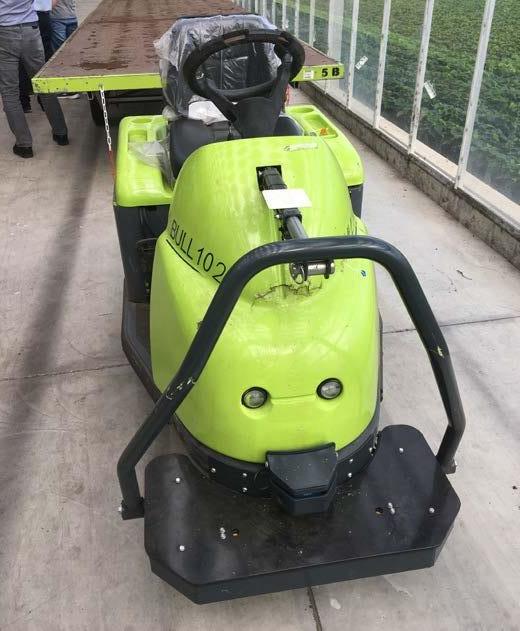
Automated transport system
Knowledge at
Pansy Mottle Syndrome Typical Symptoms
Narcissus Crop walker guide (new Pansy Mottle Syndrome (PaMS) is a physiological disorder impacting summer-grown pansy and viola crops. Various symptoms are expressed from the seedling stage onwards which vary in severity and frequency by variety. Research is currently trying to identify the conditions which trigger symptom expression. Plug plants Plants during production Finished plants your fingertips

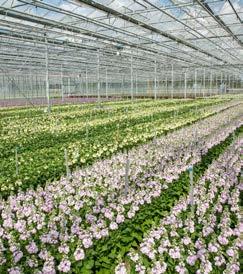
cover), Energy management guide cover (GrowSave), Hardy Nursery Stock CWG. Produced for you by: AHDB Horticulture , Stoneleigh Park, T 024 7669 2051 Kenilworth, Warwickshire, CV8 2TL E comms@ahdb.org.uk W ahdb.org.uk If you no longer wish to receive this information, @AHDB_Hort please email us on comms@ahdb.org.uk All images courtesy and copyright of ADAS. While the Agriculture and Horticulture Development Board seeks to ensure that the information contained within this document is accurate at the time of printing, no warranty is given in respect thereof and, to the maximum extent permitted by law, the Agriculture and Horticulture Development Board accepts no liability for loss, damage or injury howsoever caused (including that caused by negligence) or suffered directly or indirectly in relation to information and opinions contained in or omitted from this document. Reference herein to trade names and proprietary products without stating that they are protected does not imply that they may be regarded as unprotected and thus free for general use. No endorsement of named products is intended, nor is any criticism implied of other alternative but unnamed products. © Agriculture and Horticulture Development Board 2020. All rights reserved. Loss of growing point Loss of growing point Flower and leaf distortion, leaf mottling Leaf mottling Thickened, strap-like leaves and mottling Leaf distortion and mottling Extensive leaf mottling Strap-like leaves with mottling Thickened, strap-like leaves Energy management in protected cropping Did you know that all of our guides, manuals and posters are available for you to order by post? Plus, our wealth of factsheets and technical information is also available for free, online at ahdb.org.uk/knowledge-library To order a copy of any of our publications,
Crop Walkers’ Guide Crop Walkers’ Guide Hardy Nursery Stock Produced for you by: AHDB Horticulture Stoneleigh Park Kenilworth Warwickshire CV8 2TL T 024 7669 2051 E comms@ahdb.org.uk W horticulture.ahdb.org.uk @AHDB_Hort
If you no longer wish to receive this information, please email us on comms@ahdb.org.uk While the Agriculture and Horticulture Development Board seeks to ensure that the information contained within this document is accurate at the time of printing, no warranty is given in respect thereof and, to the maximum extent permitted by law, the Agriculture and Horticulture Development Board accepts no liability for loss, damage or injury howsoever caused (including that caused by negligence) or suffered directly or indirectly in relation to information and opinions contained in or omitted from this document. © Agriculture and Horticulture Development Board 2019. All rights reserved. Hardy Nursery Stock
Robot arm used in the project
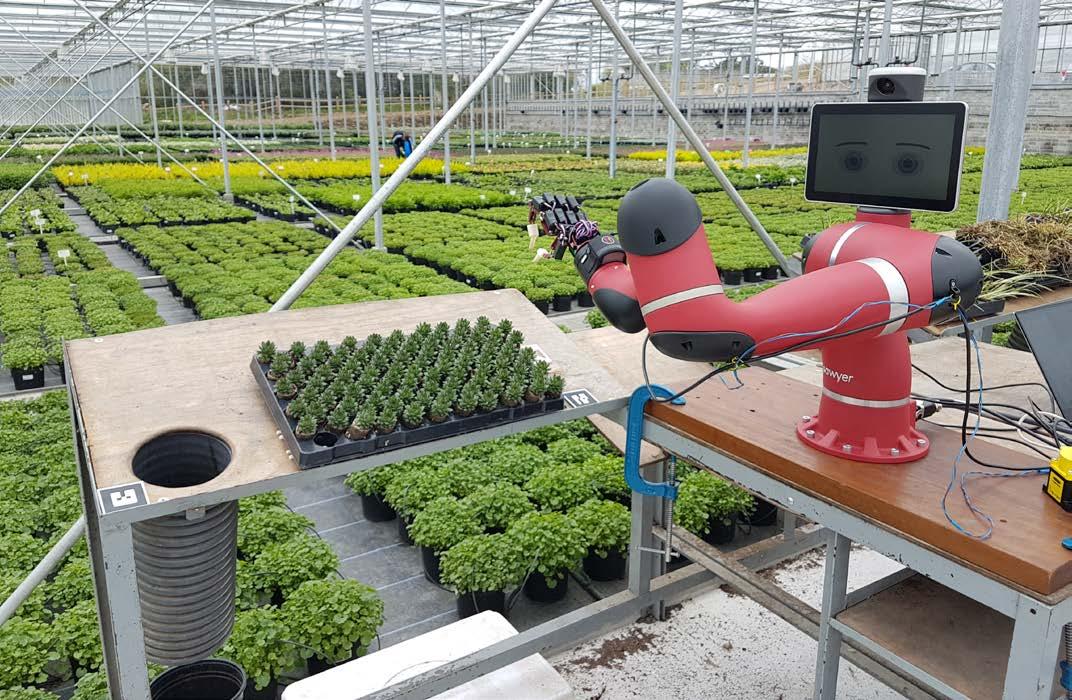
Task teaching for robots
AHDB project code: HNS/PO 194 GROWBOT: A grower-reprogrammable robot for ornamental plant production tasks Term: October 2016 to September 2019 Project leader: Matthew Howard, King’s College London PhD student: Aran Sena
Robotics offers many opportunities for alleviating labour challenges in the horticulture industry. Current-generation robots have made robotics much more accessible; however, these developments fall short for the horticulture industry in many cases, due to the complexity and variety of products being handled.
The use of learning systems in combination with robotics is a possible solution, which allows robots to perform tasks that would be difficult to program directly. Using the approach of ‘learning from demonstration’, a robot can learn to perform repetitive tasks from a human teacher, without the use of any programming languages. However, the performance of the robot system is still dependent on the quality of the teaching provided by the person.
The project GROWBOT was designed to improve understanding of to how to assess, guide and improve novice teaching performance, with the aim of placing advanced robotic capabilities directly in the hands of growers.
Results Using an industrial collaborative robot, 36 nursery participants were tasked with teaching the robot how to pick plants from a 100-plant plug tray and deposit them into a disposal bowl. The group of 36 participants were split, depending on the feedback supplied. The ‘no feedback’ scenario was where participants were given no feedback or guidance on how the robot’s learning was progressing to simulate a naïve teaching approach; ‘replay feedback’ was where the robot would repeat the task for the last demonstration given; ‘batch feedback’ was where the robot would perform the task for five designated testing points; and ‘selected feedback’ was where the participant was free to ask the robot to perform the task for any plant position at any time to simulate a more natural uninformed teaching interaction.
The results obtained show strong support for feedback provision to the teaching being an important element to effective learning. Replay and selected feedback were no better than no feedback. This suggests that repeating what has just been shown offers little insight to the robot learning status and that the participants were not able to naturally query the robot about its performance to gain a better understanding.
In addition to improving the performance of learning from demonstration-based robotics in real-world conditions, the research presented in this project provides foundations for a measured approach towards evaluating the teaching performance of the people who will be tasked with deploying robots in the workplace.
Ornamental skills survey identifies gaps and opportunities AHDB project code: HNS POBOF 201 Ornamental horticulture sector skills survey Term: March 2019 to August 2019 Project leader: Michael Oberreuter, Pye Tait Consulting
Recent research has found ornamental horticulture and landscaping to span some 569,000 jobs and contribute around £24 billion to national GDP. To ensure future growth, the ornamental horticulture sector needs to capitalise on technical innovation, ensure a flexible and adaptable workforce to meet seasonal demand, and have a clear pathway to a skilled career through schools, apprenticeships, technical and university education and relevant training routes. The starting point is robust and reliable industry-focused intelligence and knowledge sharing which can affirm and shed more light on hitherto anecdotal skills and training concerns that have surfaced in recent years.
The project A detailed skills survey of around 1,000 businesses, supported by discussion forums, ascertained the skills needs of the ornamental horticulture industry across the UK. Results from the survey fed into the Ornamental Horticulture Round Table Group and wider sector to support the case for lobbying government and requests for funding, helped to inform on Migration Advisory Committee consultations and provided insight about the demand for, and gaps in, training within the horticulture sector. It is anticipated that this project will help in attainment of a sufficient labour force post-Brexit and a skilled career pathway into the industry.
Results It was found that skills and labour issues were of key concern in the short to medium term. Significant skills gaps and shortages were highlighted. Difficulties in the 27% of businesses anticipated an increase in staff numbers over the next two years. Of these, a high proportion was concentrated in a number of largeand medium-sized businesses. This was noted at a time when, due to there being almost full employment in the UK, there is a challenging labour pool for employers.
It was reported that recruits to the sector often lack basic practical skills. ‘T Levels’ (two-year qualifications designed to give 16- to 19-year-olds a head start towards the career they want) could help in guiding more young people into the sector, but 85% of businesses in the wider sector were virtually unaware of them. The perceived low salaries in the sector exacerbate this recruitment. The sector may need to undertake a gradual increasing use of flexible working as a result, to accommodate the growing atypical workforce structures nationally.
The average age of workers was slightly lower than the UK average, nevertheless there were strong perceptions among employers that the workforce is ageing, possibly as a result of the low number of apprentices in the sector, the ageing of key job roles and the effects of the physically demanding nature of work.
All skill sets queried in the survey were perceived by employers as increasing in importance over the next three to five years. Of focus were health and safety, environmental awareness, irrigation management, basic machinery/equipment knowledge, as well as an understanding of crop protection and plant care.
The low number of apprentices indicates that talent pipelines into the sector need to be improved. The survey indicated that the average number of apprentices in business will stagnate at 0.7 over the next three years; this also suggests employers need help with understanding the apprentice model and the benefits to their business. The high use of in-house training and the lack of awareness of resources were additional indications of a low take-up of initiatives like apprenticeships.
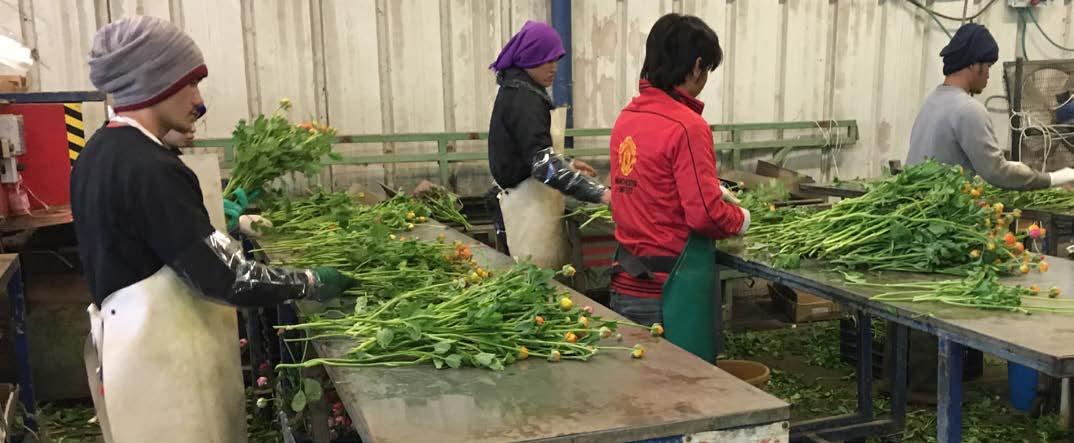
Produced for you by:
AHDB Horticulture Stoneleigh Park Kenilworth Warwickshire CV8 2TL
T 024 7669 2051 E comms@ahdb.org.uk W ahdb.org.uk @AHDB_Hort
While the Agriculture and Horticulture Development Board seeks to ensure that the information contained within this document is accurate at the time of printing, no warranty is given in respect thereof and, to the maximum extent permitted by law, the Agriculture and Horticulture Development Board accepts no liability for loss, damage or injury howsoever caused (including that caused by negligence) or suffered directly or indirectly in relation to information and opinions contained in or omitted from this document.





